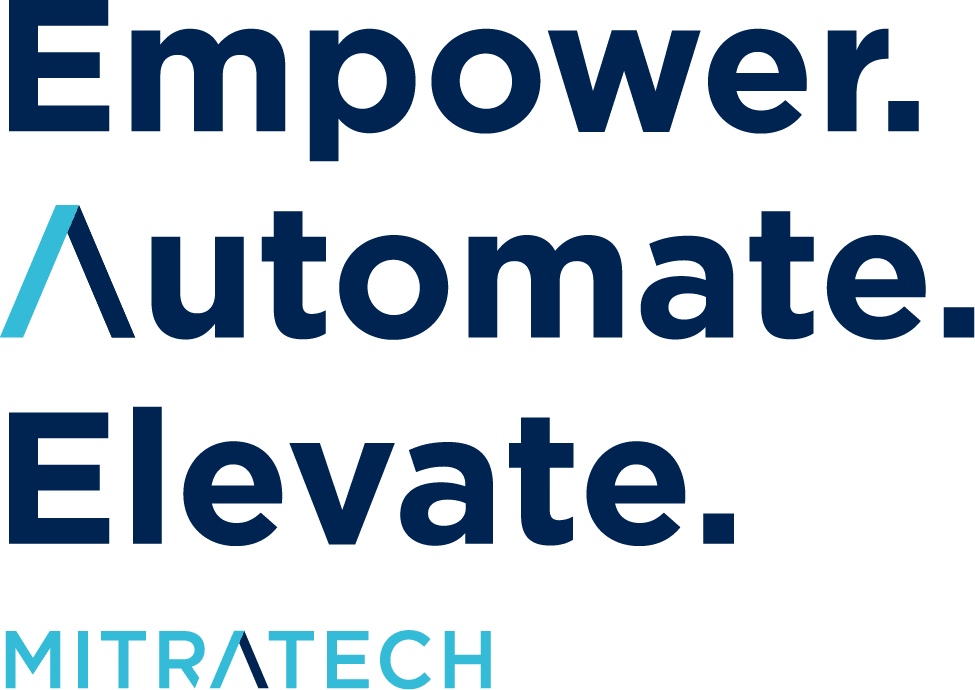The New Reality: Regulatory Change Is Reshaping Legal’s Role – Here’s How
The line between legal, compliance, and risk management is disappearing. Once viewed primarily as advisors or risk mitigators, legal departments are increasingly called on to strategically manage how the organization anticipates, interprets, and operationalizes regulatory change.
Why? Because today’s regulatory environment is unlike anything before:
- Rising enforcement actions mean mistakes are costlier than ever
- Evolving global mandates demand coordination across jurisdictions
- Escalating board-level scrutiny makes compliance a business-critical priority
Today, legal is expected to go beyond advice to operationalize accountability, coordination, and defensibility across the enterprise. Whether it’s navigating AI governance, managing cross-border investigations, or operationalizing new regulations like DORA or the Corporate Sustainability Due Diligence Directive (CSDDD), legal teams are now pivotal to an organization’s ability to anticipate and respond to regulatory change.
But many legal departments aren’t equipped for this expanded role. Siloed systems, disjointed processes, and limited visibility leave them struggling to meet the moment. In fact, according to Gartner’s 2025 General Counsel Leadership Vision, 52% of legal and compliance leaders are prioritizing improvements to regulatory tracking and intelligence this year.
To meet this challenge, legal teams need connected solutions that unify their operations across legal, compliance, risk, and governance workflows. Modern legal matter management software delivers exactly that. When connected with legal hold, policy, and regulatory change management systems, they become a central nervous system – empowering legal to lead with clarity, compliance, and strategic control.
Here’s a closer look at how integrated matter management equips legal to operate at the speed of risk and stay ahead of regulatory change.
1. Centralizing Information for Greater Transparency
One of the key advantages of modern matter management software is its ability to centralize case information in a user-friendly and easily accessible format. Legal teams can monitor the real-time status of every matter, link associated documents, and maintain a complete historical record, including communications, actions taken, and outcomes, all of which are vital for demonstrating compliance to regulators. Built-in audit trails promote transparency and accountability while ensuring organizations are prepared for internal reviews and external regulatory audits. Additionally, robust security controls ensure only authorized users can access sensitive matters, protecting confidentiality across legal and compliance teams.
By embedding document automation capabilities, legal departments can now directly leverage and enforce the use of previously approved templates to enforce version control, prevent duplication, and facilitate secure, role-based access across legal departments. This not only reduces administrative overhead but ensures consistent documentation practices, minimizing compliance risks and enabling faster responses to regulatory inquiries or deadlines.
2. Integration, Real-Time Insights, and Scalability
Siloed systems create blind spots that undermine regulatory readiness. By integrating matter management with compliance and legal hold tools, compliance tracking, and enterprise systems like HR and finance, legal teams gain:
- End-to-end visibility across legal and risk workflows
- Unified reporting language across disciplines for accurate, organization-wide insights
- Dashboards showing trends in legal holds, regulatory actions, and matter types with the highest compliance risks
- Data-driven decisions supported by AI-powered analytics and machine learning for sentiment analysis and summaries
- Cloud-native scalability for consistent processes across jurisdictions and risk disciplines, meeting global regulatory requirements and supporting local adaptations. This integration allows legal teams to spend less time chasing updates and more time partnering with cross-functional stakeholders on strategic solutions.
This interoperability helps organizations avoid regulatory blind spots, enabling them to respond quickly to changes, pass audits with confidence, and maintain compliance even as new regulations come into play (or existing ones evolve!).
Seamless integrations enable legal teams to manage the entire lifecycle of a matter – from intake through resolution – without needing to switch tools. This enhances collaboration, eliminates duplicate efforts, and ensures the system can adapt to evolving business needs. Scalability is especially important for growing enterprises and global law firms that require consistent processes across multiple jurisdictions.
3. Automating Manual Workflows for Consistency and Speed
Modern matter management software does more than organize data; it transforms the way legal work is done. Automation provides valuable insights by revealing trends and potential risks based on the data flowing through workflows. A workflow for reporting incidents across jurisdictions, for instance, can surface patterns that indicate a need for additional training or signal more significant issues requiring attention. Automation tools also streamline repetitive administrative tasks such as assigning matters, routing approvals, or flagging critical deadlines. This ensures consistency and reduces human error, both of which are essential for maintaining regulatory compliance.
Example: When Yahoo Legal leveraged Mitratech, it created a self-service NDA workflow portal covering 20+ countries, even utilizing Chinese characters. Used by hundreds of employees annually, it freed lawyers or paralegals from being bogged down in hundreds of NDAs, eliminating thousands of costly wage hours.
A self-service NDA workflow can be up to 7 times faster and 15 times more efficient than a manual process, with 100% compliance and up to 400% ROI.
With a well-structured workflow in place, legal professionals are free to focus on higher-value tasks. This shift not only increases productivity but also improves morale by minimizing burnout and allowing legal teams to contribute strategically to organizational objectives.
4. Navigating AI Governance
AI is no longer a future concern – it’s a present regulatory priority. With the EU AI Act on its way to enactment and similar frameworks under consideration in the U.S., Canada, and elsewhere, companies must ensure that AI systems are trustworthy, transparent, and legally compliant from design through deployment.
This has profound implications for legal teams. General Counsel (GCs) and Chief Legal Officers (CLOs) are increasingly called upon to not only interpret these emerging regulations but to co-lead enterprise AI governance strategies. They’re advising on risk exposure, managing AI-related liabilities, and shaping the cross-functional policies that ensure legal, ethical, and reputational safeguards are in place.
But legal leaders aren’t just interpreters of law – they’re also solution architects. The most business-minded GCs and CLOs are recommending the systems, processes, and platforms that can support compliant AI development and usage.
That’s where connected legal technology comes in.
Modern legal matter management software – when integrated with compliance tracking, risk management, and AI policy controls – helps organizations operationalize AI governance by:
- Tracking AI-related regulatory matters and investigations in a structured, auditable system.
- Connecting legal, compliance, and risk functions to align on rapidly evolving AI rules (like the EU AI Act, NIST AI RMF, and more)
- Supporting cross-border coordination, especially as different jurisdictions impose varied obligations on AI transparency, oversight, and usage
As organizations accelerate AI adoption, legal teams must evolve from AI risk observers to AI governance leaders. By leveraging connected platforms, GCs and CLOs can help their companies navigate AI regulation with confidence, ensuring innovation and compliance go hand in hand.
5. Driving Adoption: Empowering Teams for Regulatory Readiness
Even the most robust platform can’t safeguard compliance if legal and compliance teams don’t fully adopt it. Adoption isn’t just about ease of use; it’s about enabling every user to follow processes that ensure regulatory requirements are met consistently.
Modern legal matter management software supports this by:
- Providing intuitive, role-based dashboards that give attorneys, paralegals, and compliance officers clear visibility into critical deadlines, legal holds, and matter statuses, reducing the risk of missed actions that could lead to non-compliance.
- Offering guided onboarding and contextual support to help teams align on workflows and responsibilities, ensuring regulatory tasks are executed correctly from day one.
- Designing user-friendly interfaces that minimize errors in data entry and matter tracking, resulting in cleaner, more defensible records for audits and investigations.
When adoption accelerates, legal operations achieve the consistency, accuracy, and transparency regulators demand.

Example: Morgan Stanley implemented Mitratech as its enterprise-wide matter management platform, integrating with 16 systems and supporting 2,400+ users. This initiative streamlined billing, enhanced visibility, and decommissioned legacy tools like SharePoint and Serengeti.
Key wins:
- 150+ person-hours saved per quarter
- Seamless document and billing integration
- Ongoing optimization through post-launch “hyper-care”
Morgan Stanley’s approach demonstrates that with the right platform and governance, legal operations can scale, adapt, and drive innovation.
Beyond Legal Matter Management: Building a Connected Legal and Compliance Ecosystem
Regulatory readiness doesn’t stop with legal matter management. To stay ahead of evolving requirements, legal departments need connected systems that unify matter management, legal hold, compliance management, and workflow automation into one seamless ecosystem.
This integrated approach delivers:
- A consolidated view of risk and compliance across departments and geographies
- Streamlined audits with a single reporting language and real-time dashboards
- Automated workflows that ensure consistent application of regulatory processes
- AI-driven insights for identifying emerging risks and improving response times
- Greater capacity for legal teams to focus on high-value, strategic work by minimizing time spent on repetitive tasks, reporting, and tracking
By breaking down silos and enabling cross-functional collaboration, organizations gain the visibility and agility needed to manage risk and maintain compliance proactively.
What Comes Next: Elevating Legal’s Strategic Role
By implementing the right legal matter management software, legal departments are uniquely positioned to shift from reactive compliance to proactive, strategic leadership. As regulatory demands continue to evolve, legal teams must think beyond implementation to focus on continuous optimization, integration, and innovation.
To explore how your legal team can drive transformation and compliance readiness, watch our on-demand webinar: “What’s the Matter? Expert Tips for Driving Seamless Matter Management” or get in touch with our team!



